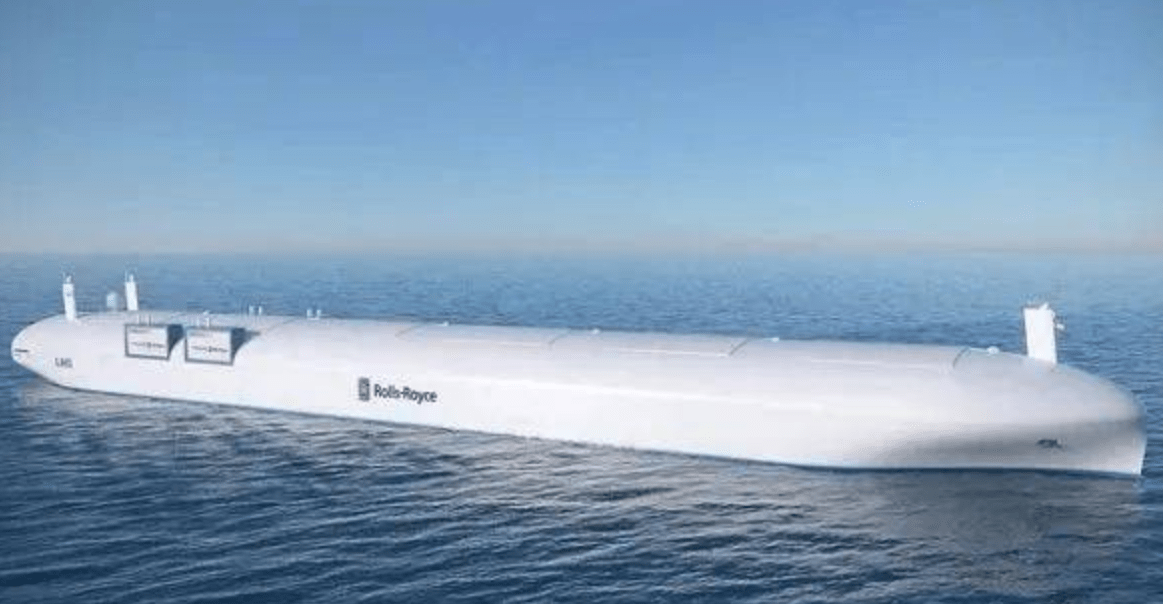United States Navy successfully completed a test mission of 4,700 nautical miles (about 8,704 kilometers) and successfully sailed from the Atlantic Ocean to the Pacific Ocean, and successfully passed through the famous Panama Canal for the first time. This is the first unmanned ship to pass through the Panama Canal.
It is worth noting that this unmanned ship does not pass through the canal under remote control, but through the Panama Canal under full autonomous and automatic control, reflecting a very high level of automation.
The unmanned fleet has a long history of planning. On April 21 this year, some U.S. media said that the Pentagon planned to reduce the number of U.S. Navy aircraft carriers from the current 11 to 9, and the military expenditure released was used to build a new unmanned fleet. The unmanned ship nicknamed “Overlord” is an important member of the U.S. military’s unmanned fleet.
The total length of the “Overlord” unmanned ship is 59 meters, and it adopts a catamaran design, similar to the HSV-1 high-speed transport ship. The bihull design is characterized by small contact area between the hull and the surface, faster speed and better stability.” The Overlord can transport 540 tons of supplies and continuously sail at 35 knots of high speed, with a strong rapid transportation capability. The total trial mileage of Overlord this time is about 4,700 nautical miles, of which 97% of the time is “in autonomous navigation mode”.
Unmanned war is a new mode of war produced after the development of automation technology to a relatively high level. At present, many countries around the world have explored unmanned wars, but only China and the United States have really achieved results. In early November, our 73rd Army held a large-scale landing exercise on the southeast coast. The exercises used drones, unmanned boats and unmanned vehicles to carry out joint land, sea and air operations, demonstrating the basic form of unmanned warfare for the first time.
The use of unmanned combat ships can be broadly divided into two types: the first is to rush to the front line and engage in various dangerous tasks, such as near the enemy’s coast for coastal reconnaissance, mine clearance and other high-risk combat tasks. Here’s a sentence: Don’t underestimate the mines! During World War II, the U.S. military launched a battle code-named “Hunger” against Japan, dispatching heavy bombers, including B-29, to mine in the waters around Japan. In the five-month “Hunger” battle, the U.S. military deployed a total of about 11,000 mines and sank more than 670 ships of various types, including the Japanese naval aircraft carrier “Flying Eagle”, with a total tonnage of more than 1.4 million tons, which exceeded the combined records of many famous naval battles such as Midway Island, Coral Sea and Mariana!
A two-hull unmanned ship like Overlord is very suitable for minesweeping and mine laying combat tasks. Once the U.S. Navy implements the configuration of an unmanned fleet, the single mine operation is enough to pose a huge threat to us and requires great vigilance.
The “Overlord”‘s voyage to the two oceans also proves that unmanned boats can also undertake rapid transportation and supply tasks in the rear. From the test of the U.S. military, it is not difficult to see that the overlord rapid transport ship designed with a two-hull structure not only has strong load capacity, but also has a speed of up to 35 knots, which is not up to the level that no naval supply ship of any country can achieve at present.
Judging from this test of the U.S. military, the actual use effect of the Overlord-class unmanned ship is satisfactory. At least the ship has verified that the unmanned ship can indeed complete the task of long-range rapid transportation and supply under its own state, which provides a new way of thinking for future transoceanic and naval warfare: fast unmanned ships can be used to fight against the enemy in the front.
The flotilla launched an attack and deployed mines in the enemy’s waters and routes, and wiped out the mines deployed by the enemy in its own defense areas to ensure the safety of its fleet. At the same time, some unmanned ships can quickly transport supplies to their own fleet on the front line to ensure that the fleet can continue to operate.



